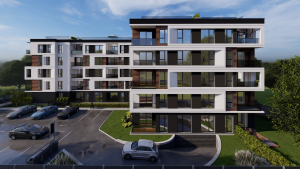
Cushman & Wakefield presented the findings of its survey conducted among executives representing over 30 leading international hotel operators in its latest report. The survey was completed in December 2021 by hotel operators with a presence or interest in entering the CEE region.
Key findings:
- The top five most attractive markets in the CEE region are Prague, Warsaw, Budapest, Cracow, and Bucharest. Compared to the 2020 survey, rising stars on the Baltic coast include Gdansk, Riga and Tallin, which made it to the top ten CEE markets. Despite the lower ratings of some regional cities, several respondents expressed interest in Łódź (PL) and Ostrava (CZ). Other markets mentioned in the survey included Katowice (PL), Pilsen (CZ), Constanta (RO), Iasi (RO), Dnipro (UA) and resort destinations.
- International operators (60% of respondents) are primarily interested in CEE capital cities such as Warsaw, Budapest, Prague and Bucharest.
- Poland appears to be the key destination for expansion for hotel operators, with four Polish cities among the top ten markets.
- The survey findings indicate a diverse approach among operators to hotels with high sustainability credentials. While some operators are willing to offer more favourable commercial terms on such properties, there is still a substantial number of those who do not (or are unlikely to) offer owners contract incentives for sustainable buildings.
- Over half of the surveyed operators in the CEE region commit to leases and only 3-7% decided not to consider such an operating model due to COVID-19. However, operators seem to be more cautious about making lease decisions.
- Although most of the surveyed operators expect all the CEE markets to recover by 2024, leisure destinations and regional cities are anticipated to reach their 2019 performance levels earlier than capital cities. Additionally, leisure destinations and regional cities are expected to return to pre-pandemic RevPAR levels by 2023 by 77% and 47% of respondents, respectively.
- COVID-19 has had a significant impact on the development pipeline, with some projects either delayed or put on hold. Projects were postponed or placed on hold by 63% and 47% of respondents, respectively.
“The findings of Hospitality Operator Beat Q4 2021 clearly showcase that Poland is perceived as the strongest and most demanded market overall by major hotel operators across the CEE region. The 2021 results are setting a promising base for further RevPAR recovery, with full-year numbers still being notably below pre-pandemic levels. Precisely, countrywide, RevPAR was 40% higher than in 2020, but still 50% below the 2019 figure. It is worth noting that summer months' results exceeded the 2019 RevPAR on some markets such as Tricity or Wroclaw. It is confirmation that once the current restrictions are lifted, hotels will be able to return to a recovery path,” says Łukasz Bondyra, Senior Consultant Hospitality CEE & SEE.
“Although the transaction market in Poland has been relatively silent in the last two years compared to pre-pandemic activity, with 2021 seeing less than a quarter of hotel transaction volume compared to 2019, we are seeing a continued interest of investors in new acquisitions. We are also seeing that their target markets are aligned with the results of Hospitality Operator Beat Q4 2021. However, investors are faced with a lack of quality product available for sale, which combined with their more careful approach to micro location assessment, causes that whenever a prime hotel product enters a market, it gains considerable attention from a wide pool of buyers. It is being observed that the number of investors interested in alternative ways of investing in the hotel business is increasing. We are observing more parties concluding or considering acquisitions of minority and majority stakes in hotel holding companies, operating platforms, developments or JV creations, compared to pre-COVID. We expect the hotel transaction market in Poland to pick up during 2022, where our team is currently involved in several transactions which are expected to close this year,” says David Nath, Head of Hospitality CEE & SEE.
Poland
Poland remains the primary target for most operators active in the CEE region. Warsaw, Cracow, Wrocław and Gdansk (Tricity) are among the top 10 destinations for expansion, ahead of several CEE capital cities such as Bratislava, Sofia or Kyiv.
Warsaw improved its ranking and was the second most attractive market in 2021, after Prague. Overall, over 70% of operators are interested in expanding in Poland’s capital. About 67% of respondents also expressed strong interest in expanding in Cracow.
Surveyed operators also cited other regional cities in Poland as their target markets, including Poznań, Katowice, Zakopane, Lublin, Białystok, and Łódź.
Czech Republic
80% of operators are interested in Prague, considered as the most attractive market in the CEE/SEE region. The small proportion of operators who expressed only moderate or low interest in the Czech capital are mainly those who already have a presence in this market.
While Brno achieved an overall average rating of moderate attractiveness (2.6 out of 5), a third of operators expressed high or very high interest in this market, which is the second-largest city in the Czech Republic.
Other Czech cities indicated by the surveyed operators as their target markets (in addition to those listed in the survey) included Ostrava, Pilsen, Karlovy Vary, and Olomouc.
Hungary
Budapest is the third most sought-after destination for operators in the CEE region. Similarly, as with Prague, the small proportion of operators who expressed moderate or low interest in the Hungarian capital are largely those who have already built a presence in this market.
Debrecen, the second-largest city in Hungary, achieved an overall average rating of 2.1 out of 5. Although this rating indicates moderate attractiveness, 16% of operators are highly interested in expanding in the city.
Romania
Bucharest was indicated as a highly or very highly attractive market by 58% of the surveyed operators. It is also notable that players who had left the market were highly interested in re-entering Bucharest.
Only a small proportion of operators did not target the capital city as a primary focus for their expansion, as their strategy is more oriented on either resort locations or Central and Western Europe.
Half of the respondents expressed interest in Cluj-Napoca, one of Romania’s fastest-developing secondary cities. The majority of these respondents are internationally renowned chains, a few of which are not yet present in this market.
Other Romanian cities mentioned by the surveyed operators as their target markets (in addition to those directly listed in the survey) included Iasi, Constanta, and Brasov.



